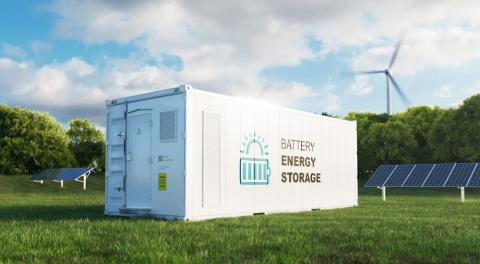The Australian National Electricity Market: Old, Oversupplied and Vulnerable
The coal-fired energy industry in Australia is an especially dirty form of electricity generation, and is well past its prime by industry technology standards.
Some background: The Australian National Electricity Market (NEM) is the wholesale electricity spot market through which generators and retailers trade electricity. It is run by the Australian Energy Market Operator, and has about 200 large generators and five state-based transmission networks (in Victoria, New South Wales, Queensland, South Australia, and Tasmania) linked by cross-border interconnectors. In geographic span, the NEM is one of the largest interconnected power systems in the world.
The generating fleet is skewed toward old, polluting sub-critical plants—sub-critical plants being those that burn coal in a less-efficient way than more modern plants.
In New South Wales, Queensland and Victoria, coal-fired electricity generation represents 50 percent or more of all total generating capacity, and the coal-fired electricity generation fleet in these three states is entirely sub-critical. Although Australia accounts for only approximately 2.2 percent of the world’s sub-critical electricity generation, it has the highest carbon intensity of any country with major sub-critical generating assets. Indeed, the four brown coal (lignite) generators in Victoria all exceed, by a significant margin, the world mean emission intensity for sub-critical generators.
THE AUSTRALIAN NATIONAL ELECTRICITY MARKET IS ALSO PLAGUED BY SIGNIFICANT MARKET OVERCAPACITY, WITH THE RISK OF FURTHER DETERIORATION.
The economy and the coal sector in Australia have decoupled. From its peak in 2009 until now, electricity demand in the NEM has fallen by 7.5 percent, while Australian GDP has expanded by approximately 16 percent. Economic growth can proceed—and has—without having to rely on coal-fired electricity. The Australian Energy Market Operator’s own numbers confirm this fact, showing excess capacity on the order of 8000 megawatts, a not-insubstantial 16 percent of installed capacity.
This market imbalance has been driven largely by three demand-side forces:
- Growth in rooftop solar installations (driven significantly by steep rises in retail electricity prices)
- Energy-efficiency advances
- A decline in energy-intensive industries, particularly across the aluminium-production sector
A consequence of this imbalance has been a weakening in wholesale electricity prices. We calculate, for example, that in real terms wholesale electricity prices in Victoria actually fell from 2012 to 2015, while the state’s economy grew and most other prices went up.
In our view, these market imbalances will not just persist but will grow, particularly in Victoria and New South Wales, putting further pressure on electricity-generator profits.
Recent closures also indicate a stressed market. Just since November 2014, four coal-fired generators have closed in New South Wales, Victoria, and South Australia, representing a total of almost 2,000 megawatts of capacity.
The announcement by Alinta Energy in June that it would close its Flinders Operations in South Australia was unexpected—although illustrative—especially given significant capital expenditure over recent years. Alinta stated in its announcement that the company’s Northern (554 megawatts) and Playford B (240 megawatts) power stations, as well as its Leigh Creek Mine, would not operate beyond March 2018 and may close earlier as “continuing operation had become increasingly uneconomic.”
Alinta stated further that over the past four and a half years it had incurred operating losses in the vicinity of $100 million, while at the same time investing $200 million. Here’s the concession in a nutshell:
“The decline in demand for energy, as households have become more efficient and the number of industrial customers has declined, combined with policy settings designed to support significant growth in renewable energy generation have together had the effect of causing a significant oversupply of power available to South Australia.”
THE NEXT COAL-FIRED POWER PLANT CLOSURE IS NOT A QUESTION OF IF, BUT WHEN, AND GOVERNMENT SHOULD BE PREPARING FOR IT. Our research shows that further wholesale price and demand declines will hurt the profitability of coal-fired facilities all across the NEM—albeit the damage could be moderated by the fact that most generators have a natural hedge in the form of downstream retail operations, and some generators have major electricity-supply contracts.
The black-coal fired generators in New South Wales tend to suffer more from lower capacity utilization than generators in other states across the NEM, and while the brown-coal generators in Victoria benefit from very low short-run marginal costs, their high relative fixed costs means that in a declining output environment negative operational leverage is a powerful force.
The very significant issue of site rehabilitation costs only compounds all the problems coal-fired generators now face. Depending on how “rehabilitation” is defined—mine site or power-plant site clean up, or both, and to what extent—costs will likely run into the billions of dollars industry-wide.
Our research shows that the gap between the true costs of site rehabilitation and company provisions for such costs plus government-backed rehabilitation bonds is likely to be significant. While company provisioning for rehabilitation costs would normally expand over time as a function of planned closure dates, earlier-than expected closings create an unfunded gap.
Closures of coal-fired generators are occurring all across the NEM in an unpredictable fashion these days, and we think more unexpected shutdowns are a distinct possibility in the shorter term.
It’s in the public interest for regulators to start planning now for a phase-out of sub-critical generators in the NEM—generators that are mostly old and, in Victoria, especially, highly polluting by global standards. The risks associated with pollution costs, energy security, employment, and unfunded site-rehabilitation costs are all too significant to ignore.
Tim King is IEEFA’s director of energy policy, Australasia.















